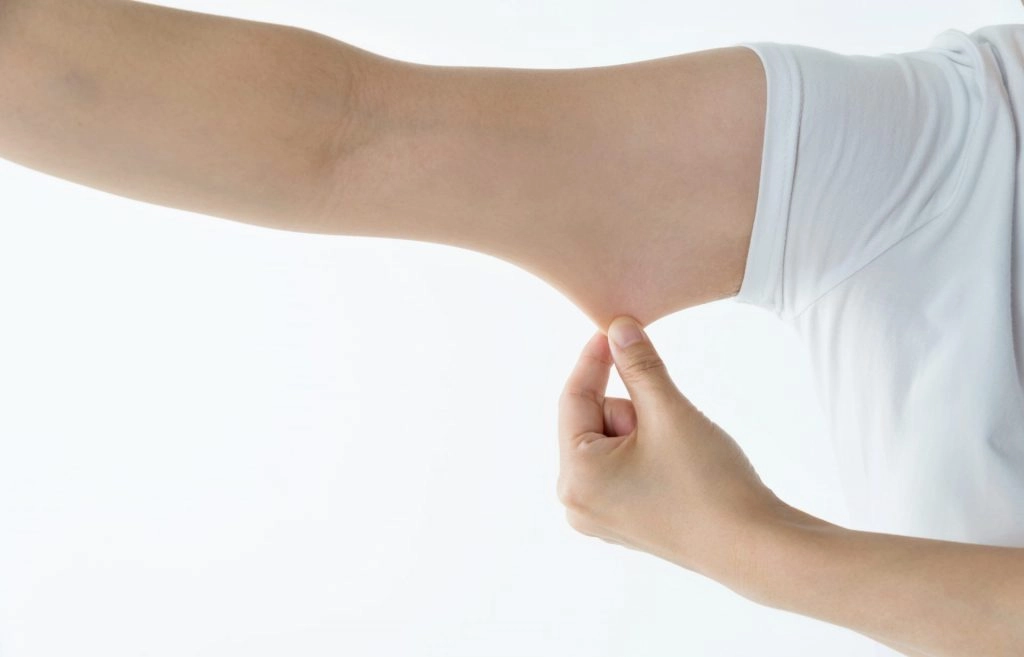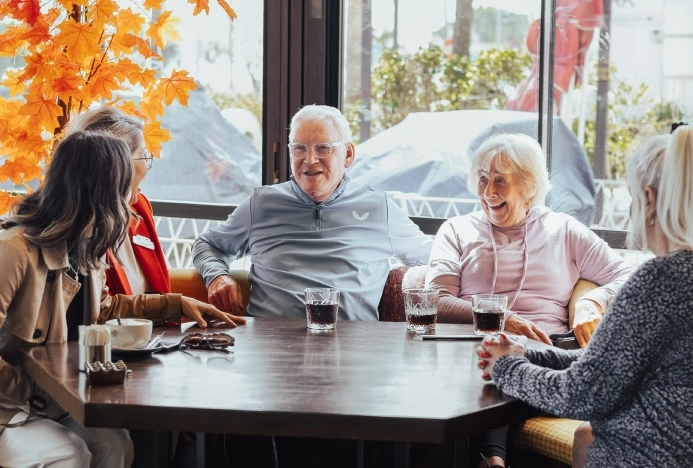Achieving significant weight loss often brings immense health benefits and personal satisfaction. However, a common aesthetic challenge that emerges for many individuals is the presence of loose skin, particularly in areas like the biceps. This phenomenon, often observed after substantial and rapid weight reduction, stems from the skin’s reduced elasticity. Collagen and elastin fibers, which provide the skin’s structural integrity, can become compromised, losing their ability to retract fully. Understanding the physiological underpinnings of loose skin biceps is crucial for addressing this concern effectively. While often perceived as a cosmetic issue, its impact can extend to physical comfort and self-perception. This introductory examination will frame the intricate relationship between weight loss, skin elasticity, and the specific manifestation of loose skin in the upper arms.
Table of Contents
Does Building Muscle Help with Loose Bicep Skin?
Building muscle provides partial improvement for loose bicep skin through several physiological mechanisms. Hypertrophy increases muscle volume beneath the skin, creating a filling effect that reduces the appearance of sagging tissue. This process proves most effective when the skin maintains adequate elasticity and collagen density.
The relationship between muscle development and skin tightening involves these key factors:
- Increased muscle mass fills out loose skin by expanding the underlying tissue structure
- Enhanced blood circulation during resistance training promotes collagen synthesis
- Improved muscle tone creates better definition and contour in the upper arm region
- Progressive overload stimulates both muscle fibres and surrounding connective tissue
Dermatological evidence indicates that muscle building effectiveness varies significantly based on individual characteristics and skin condition severity.
| Age Group | Skin Elasticity | Muscle Building Effectiveness | Expected Improvement |
|---|---|---|---|
| 20-30 years | High | Excellent | 70-85% visible reduction |
| 31-45 years | Moderate | Good | 50-70% visible reduction |
| 46-60 years | Reduced | Limited | 25-50% visible reduction |
| 60+ years | Poor | Minimal | 10-25% visible reduction |
Research demonstrates that younger individuals with moderate skin laxity achieve the most significant results through targeted bicep training. The combination of bicep curls, hammer curls, and compound movements maximises muscle volume development.
Collagen production naturally decreases with age, limiting the skin’s ability to contract around newly developed muscle tissue. Individuals with severe skin redundancy may find muscle building provides aesthetic improvement but cannot completely eliminate excess tissue. The dermis structure determines how effectively the skin adapts to increased muscle volume beneath it.
Resistance training frequency impacts results significantly. Training biceps 2-3 times weekly with progressive overload principles optimises both muscle hypertrophy and skin adaptation responses. As a result, individuals experiencing loose skin post-significant weight loss may find that targeting the biceps can be beneficial, with Loose Skin Removal Costs Surgeons Recovery becoming less of a concern. Consistent training also supports stronger connective tissues and improved skin elasticity, aiding overall physique enhancement.
Preventing and Managing Loose Arm Skin During Weight Loss
Gradual weight reduction represents the most effective approach to minimising loose skin on arms after weight loss. Following structured guidelines ensures optimal skin adaptation throughout your transformation journey.
1. Maintain a weekly weight loss rate of 1-2 pounds maximumResearch demonstrates that rapid weight reduction compromises skin elasticity and increases the likelihood of saggy arms after weight loss. The dermis requires adequate time to contract naturally as subcutaneous fat diminishes.
2. Establish a consistent timeline spanning 12-18 months for significant weight lossExtended timeframes allow collagen fibres to reorganise effectively, reducing the severity of loose skin on biceps and surrounding areas.
3. Monitor your caloric deficit to prevent exceeding 750 calories dailyExcessive caloric restrictions accelerate muscle protein breakdown, contributing to loose skin after weight loss arms complications.
4. Document progress through weekly measurements and photographsTracking helps identify early signs of skin laxity, enabling prompt intervention strategies.
Strength training protocols specifically target the underlying muscle architecture that supports arm skin integrity. Implementing targeted exercises creates a foundation that minimises the appearance of loose skin arms weight loss concerns.
- Compound movements including push-ups, tricep dips, and overhead presses stimulate multiple muscle groups simultaneously
- Progressive overload principles ensure continuous muscle development beneath the skin surface
- High-repetition training enhances muscle endurance and promotes capillary density improvements
Hydration and nutritional strategies play crucial roles in maintaining skin elasticity during weight reduction phases. Our clinical observations indicate that specific nutrients directly influence dermal thickness and collagen synthesis rates.
- Daily water intake of 35-40ml per kilogram body weight supports optimal skin hydration levels
- Vitamin C supplementation ranging from 500-1000mg daily enhances collagen production pathways
- Protein consumption of 1.6-2.2g per kilogram body weight preserves lean muscle mass
- Essential fatty acids from sources like salmon and avocados maintain skin barrier function
Topical applications containing retinoids and peptides demonstrate measurable improvements in skin firmness. Clinical studies reveal that consistent use over 12-16 weeks produces statistically significant changes in skin texture and elasticity parameters. How to tighten arm skin after weight loss involves combining these evidence-based approaches for optimal outcomes.
Best Ways to Tighten Loose Arm Skin: Natural Solutions That Work
Loose skin arms concern affects many individuals seeking effective, non-surgical approaches to restore firmness and elasticity to their upper extremities.
Targeted Exercises for Arm Skin Tightening
- Tricep dips performed on chairs or benches create resistance that strengthens underlying muscle tissue whilst improving loose skin under arms through enhanced blood circulation
- Push-ups target multiple arm muscle groups simultaneously, addressing loose skin upper arms by promoting collagen production and tissue firmness
- Arm circles with light weights engage biceps and triceps, specifically targeting loose skin biceps areas through repetitive muscle contractions
- Plank variations activate arm stabilising muscles, contributing to overall loose crepey skin on arms improvement through sustained muscle engagement
- Resistance band exercises provide controlled tension that effectively addresses how to tighten loose skin on arms naturally through progressive resistance training
Topical Treatments and Home Remedies
- Retinol-containing creams stimulate cellular turnover and collagen synthesis, directly addressing loose skin arm concerns through enhanced skin regeneration
- Vitamin E oil applications provide antioxidant protection whilst moisturising dry, crepey arm skin areas with essential fatty acids
- Aloe vera gel treatments deliver hydrating compounds that improve skin texture and elasticity when applied consistently to affected areas
- Coffee ground scrubs promote exfoliation and circulation, supporting natural skin tightening processes through mechanical stimulation
Nutrition and Lifestyle Modifications
- Collagen-rich foods including bone broth, fish, and leafy greens support structural protein production essential for skin firmness
- Vitamin C supplementation enhances collagen synthesis whilst protecting existing elastic fibres from oxidative damage
- Adequate protein intake provides amino acids necessary for tissue repair and maintenance of skin structural integrity
- Omega-3 fatty acids from fish oils maintain skin barrier function and reduce inflammation that contributes to skin laxity
The Role of Hydration in Skin Firmness
- Daily water consumption of 2-3 litres maintains optimal skin hydration levels, directly impacting elasticity and overall appearance
- Electrolyte balance supports cellular function and skin moisture retention, preventing dehydration-related skin loosening
- Herbal teas provide additional hydration whilst delivering antioxidants that protect skin structural components from damage
Massage Techniques for Improved Circulation and Tone
- Upward stroking motions from wrist to shoulder stimulate lymphatic drainage and enhance blood flow to arm tissues
- Circular massage patterns using firm pressure activate underlying muscle groups whilst improving skin texture and firmness
- Dry brushing techniques performed before showering promote circulation and natural exfoliation, supporting skin tightening processes
Sun Protection for Maintaining Skin Elasticity
- Daily SPF application prevents UV-induced collagen breakdown that accelerates skin loosening and premature ageing processes
- Protective clothing shields arm skin from harmful radiation whilst maintaining existing elastic fibre integrity
- Antioxidant-rich sunscreens provide dual protection against environmental damage and free radical formation
Surgical Options for Removing Loose Skin from Arms
Brachioplasty, commonly known as arm lift surgery, represents the most comprehensive surgical approach for addressing excess skin on the upper arms. This procedure involves making an incision along the inner arm, typically extending from the armpit to the elbow, allowing surgeons to remove significant amounts of redundant skin and subcutaneous tissue. The technique proves particularly effective for patients who have experienced substantial weight loss or natural aging-related skin laxity.
Minimal incision brachioplasty offers an alternative approach for patients with moderate skin excess. This technique utilises smaller incisions confined to the armpit area, resulting in less visible scarring. However, the procedure’s effectiveness remains limited to cases where skin redundancy is primarily located in the upper portion of the arm near the axilla.
Liposuction-assisted brachioplasty combines traditional skin excision with fat removal techniques. This approach addresses both excess skin and localised adipose deposits, providing more comprehensive contouring results. The procedure proves beneficial for patients presenting with mixed concerns of skin laxity and residual fat accumulation.
The following comparison outlines key considerations for different surgical approaches:
| Procedure Type | Recovery Period | Typical Cost Range (UK) | Scarring | Suitable Candidates |
|---|---|---|---|---|
| Full Brachioplasty | 4-6 weeks | £4,000-£7,000 | Armpit to elbow | Severe skin excess |
| Minimal Incision | 2-3 weeks | £3,000-£5,000 | Armpit only | Moderate upper arm laxity |
| Liposuction-Assisted | 3-4 weeks | £4,500-£8,000 | Variable length | Combined skin and fat excess |
Post-operative outcomes typically demonstrate significant improvement in arm contour and patient satisfaction rates. Clinical studies indicate that over 90% of patients report satisfactory results following brachioplasty procedures. However, permanent scarring remains an inevitable consequence that requires careful consideration during the decision-making process.
Revision surgery may be necessary in approximately 5-10% of cases, particularly when initial healing complications occur or patients develop unrealistic expectations regarding scar appearance. The longevity of results depends largely on maintaining stable body weight and following appropriate post-operative care protocols.
Surgical intervention remains the definitive solution for significant brachial skin redundancy, with each technique offering distinct advantages depending on individual patient anatomy and aesthetic goals. The selection of appropriate surgical approach requires thorough evaluation of skin quality, degree of excess tissue, and patient-specific factors to achieve optimal outcomes.



